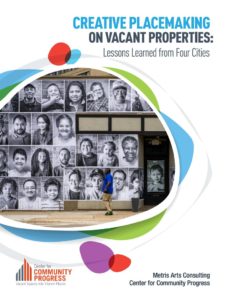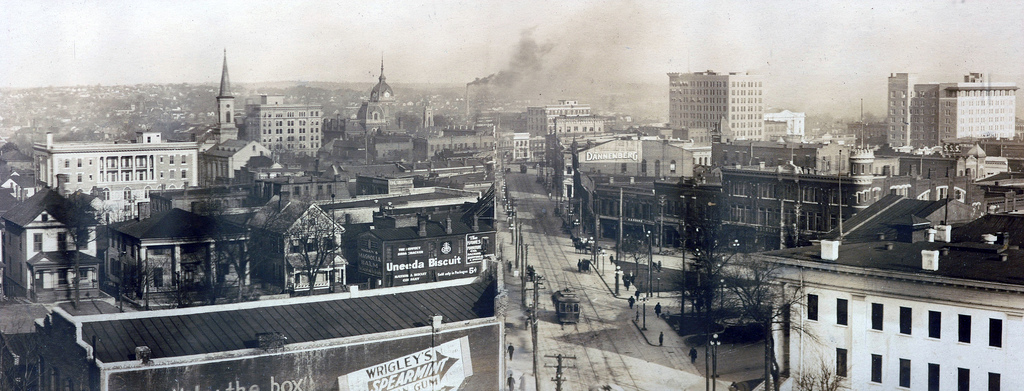What would you think if you saw an abandoned house painted entirely gold? Or stumbled upon performance art, led by young people, on a long-vacant lot?
Incorporating the arts into place-based community development can spark fresh interest in vacant property.
At the same time, creative placemaking, as a community-centered process, is a powerful tool to support equitable revitalization.
 Their newest report, Creative Placemaking on Vacant Properties: Lessons Learned from Four Cities, the Center for Community Progress (CCP) offers practical guidance for communities curious about how to leverage the power of creative placemaking to transform vacant properties.
Their newest report, Creative Placemaking on Vacant Properties: Lessons Learned from Four Cities, the Center for Community Progress (CCP) offers practical guidance for communities curious about how to leverage the power of creative placemaking to transform vacant properties.
The report includes a creative placemaking primer and key takeaways based on work conducted over the course of two years. It also explores emerging practices in four communities: Wilkinsburg, Pennsylvania; Newburgh, New York; Macon, Georgia; and Kalamazoo, Michigan (where the Kalamazoo County Land Bank‘s slogan is the 3Re Strategy: repurpose, renew, reconnect).
Founded in 2010, the Center for Community Progress is the only national nonprofit specifically dedicated to building a future in which vacant, abandoned, and deteriorated properties no longer exist. In urban, suburban, and rural communities, they address the full cycle of property revitalization. CCP recognizes the severe negative impact that vacant, abandoned, and deteriorated properties have on neighborhoods and the people living in them, including economic, social, psychological, environmental, and other harms.
They also recognize the legacy of unjust laws, policies, and systems that cause some communities to bear an unfair share of this burden. CCP is strongly committed to the belief that these properties can be tremendous resources if returned to productive uses that benefit the surrounding community.
CCP’s mission is to foster strong, equitable communities where vacant, abandoned, and deteriorated properties are transformed into assets for neighbors and neighborhoods. In all of their work, they seek to ensure that all communities have the policies, tools, and resources they need to support the effective, equitable reuse of vacant, abandoned, and deteriorated properties.
Historic photo (author unkown) shows downtown Macon, Georgia in the early 1900s.

